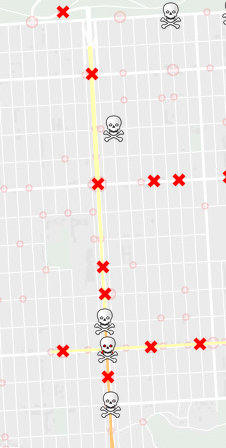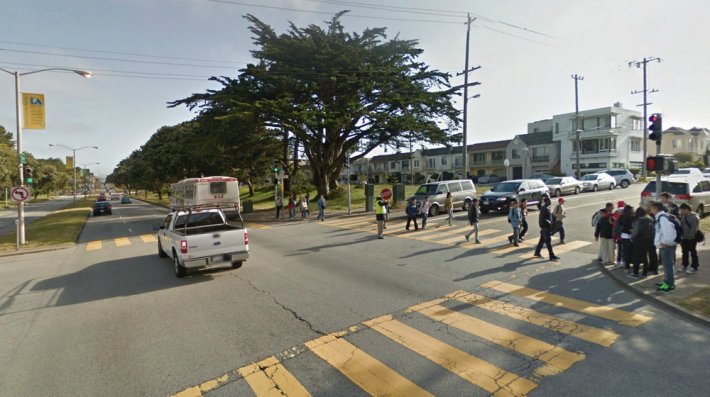Six-lane Sunset Boulevard is one of the city's most dangerous streets to cross, but that won't change under plans being developed by the SF Public Utilities Commission.

The SFPUC's Sunset Boulevard Greenway project is aimed at replacing the underground sewer system and re-landscaping the corridor's grassy medians, which are half a block wide and separate the motorway from parallel streets, to better absorb stormwater. While traffic and safety improvements aren't the focus on the project, digging up the street -- a rare and major city investment -- offers a chance for the SFMTA to make changes that could reduce pedestrian injuries, says Walk SF Executive Director Elizabeth Stampe.
"The SFPUC's current greening designs fail to address the conditions on this wide, fast street that make it so deadly," said Stampe. "This is a real missed opportunity."
Between 2005 and 2010, 28 people were hit by cars on Sunset -- many suffering severe injuries, according to data from the Department of Public Health. Three victims were killed, including an 83-year-old man at Taraval Street in 2005, a 20-year-old woman at Vicente Street in 2008, and 81-year-old Yee-Sung Poon, run over in a crosswalk at Santiago Street in January, 2009.
Poon's death was deemed nothing more than "a tragic accident" by police, according to the SF Chronicle.
But such tragedies can be prevented with smarter design. Stampe suggests removing two of Sunset's six traffic lanes, which would help tame car traffic. The only change made to Sunset in recent years was the installation of a traffic signal at Quintara Street, which, unlike redesigning streets for slower speeds, doesn't necessarily make streets safer.
"Right now the project fails to include any traffic calming, even though Sunset is deadly for walking," Stampe said. "Any improvements to Sunset should include crosswalk improvements and a road diet to make it safer for everyone."
Although no curbs will be moved and the geometry of Sunset won't really change, the SFPUC says its project could result in "rejuvenated pedestrian and cyclist space and trail use" along the medians. The SF Bicycle Coalition has called for protected bike lanes along the corridor, though those don't appear to be on the table, either.
Stampe noted that once the project is completed, "the SFPUC is talking about bringing children from nearby schools to enjoy the new greening."
"Unless the street is made safer, so it's no longer one of the city's most deadly corridors, that's a pretty bad idea."
You can fill out an interactive survey on the project here.






